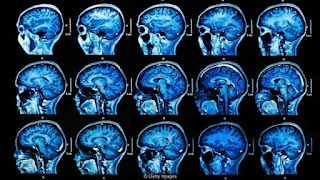Schilder’s Disease
Overview
Schilder’s disease is a very rare, progressive,
degenerative, demyelinating disorder of the central nervous system (CNS) that
usually begins in childhood and young adulthood (mostly males between the ages
of 7 and 12).
- Schilder’s disease is thought to be a variant of MS.
- As the disease progresses, larger and larger patches of demyelination occur, interfering with motor movement, speech, personality, hearing and vision, ultimately affecting the vital functions of respiration, heart rate, blood pressure.
- Schilder's disease is also known as diffuse cerebral sclerosis, diffuse cerebral sclerosis of Schilder and myelinoclastic diffuse sclerosis.
- Schilder’s disease is not the same as Addison-Schilder disease (adrenoleukodystophy), a rare inherited disease characterized by a biochemical abnormality in the myelin.
What causes Schilder’s disease?
The underlying cause of Schilder’s disease is unknown.
Schilder’s disease often occurs shortly after an infectious illness and may
begin with headache, a general feeling of discomfort or illness, and fever.
Symptoms are caused by widespread patches of demyelination throughout the brain
and spinal cord, resulting in slowed transmission of nerve signals.
International Conference on #Alzheimers, #Dementia and Related Neurodegenerative Diseases is coming up with the theme of Leading #Advancements and Remedies in the #Neurodegenerative Disorders on August 27-28 at Madrid, Spain.




Comments
Post a Comment